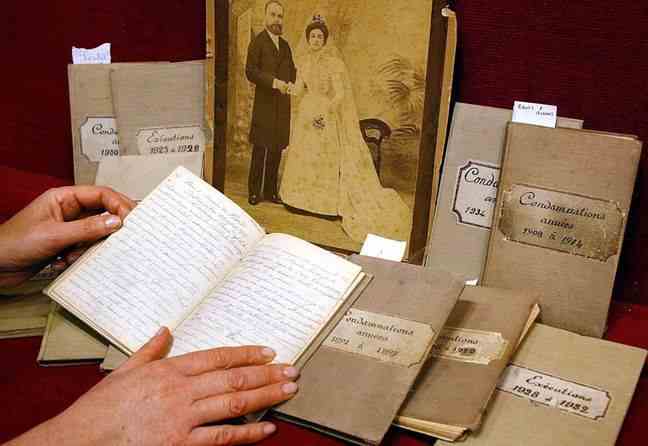He was for forty years “the executor of the high works of the Republic”. Or rather low works because his job, to say the least singular, consisted in handling the guillotine to cut off heads. And heads, Anatole Deibler cut a lot of them in his career, 395 precisely, including those of notorious criminals like Landru or Joseph Vacher, nicknamed “the killer of the shepherds”, and anarchist robbers of the Bonnot gang. 83 years after his death, one of the most famous and prolific French executioners resurfaces today on the occasion of an exhibition dedicated to him until November 4 at the Parliament of Brittany in Rennes and the release of the graphic novel In the skin of the executioner (Locus Solus), signed Olivier Keraval and Luc Monnerais. “We wanted to highlight this character who is a little lost in the twists and turns of history”, underlines the Rennes author Olivier Keraval.
It was in the Breton capital that Anatole Deibler was born on November 28, 1863. His childhood was not the happiest, the young student being bullied by his classmates. And for good reason, Anatole Deibler does not come from a normal family, his father and grandfather having worked as an executioner. “He saw his father die mad and he therefore dreamed of something else,” says Olivier Keraval. But he could not escape his destiny.
Adored by the press of the time
It was from his grandfather that Anatole Deibler learned the trade in Algeria, witnessing 19 executions which he scrupulously recounts in small notebooks. A ritual that he will perpetuate when he becomes his father’s assistant in Paris before succeeding him on his death as chief executor of the Republic. Very quickly, the press of the time became passionate about this young executioner when she was unleashed against her father, considered slow and clumsy. Quite the opposite of Anatole Deibler, hailed for the precision of his cut.

At each of his trips to the provinces, the executioner thus drains the crowds, as in Béthune where several thousand people gathered at the foot of the scaffold to witness the execution of the Pollet brothers, “the bandits of Hazebrouck”. who did not hesitate to kill their victims. “The media made him a star and kept watching him in his private life”, underlines Olivier Keraval. It is true that Anatole Deibler also stands out in the landscape. With his dandy look, he embodies the modern executioner, a thousand miles from the image of the bloodthirsty brute.
“He hated the spectacle side of executions”
Throughout his career, he also seeks to show a respectable image of the profession. “He hated the spectacle side of the executions and he campaigned for them to take place inside prisons and not in public squares, underlines the author. He was also always looking to improve his cutting speed.” To make his task easier, some convicts did not hesitate to have a dotted line engraved around their necks with the inscription “For Deibler”.

The career of the executioner, as much admired as feared, will finally end on a platform of the Paris metro, Deibler dying of a stroke on February 2, 1939 at the age of 76. The chief executor will thus never reach his hometown where he was expected to guillotine Maurice Pilorgé, a delinquent who had killed his Mexican lover a year earlier in Dinard. But the criminal’s respite will ultimately be short-lived since he will be guillotined two days later in Rennes.

